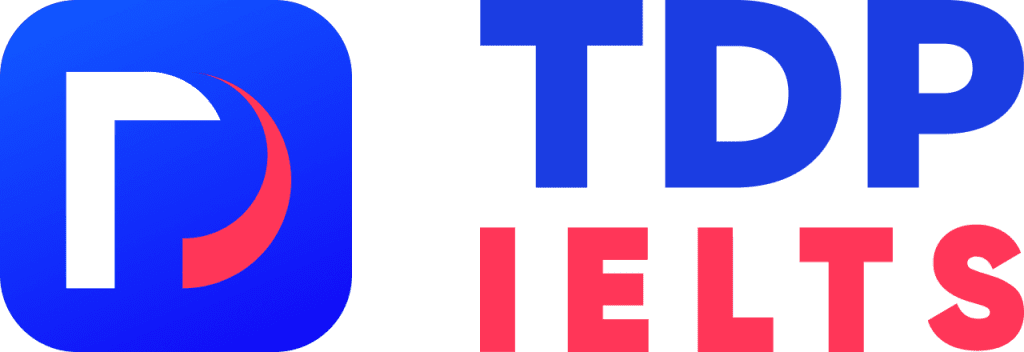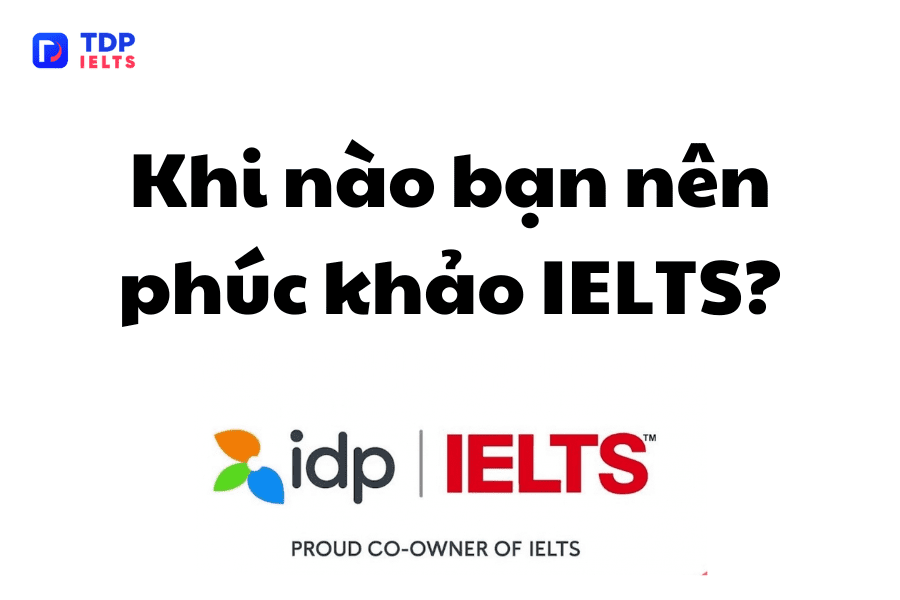Từ vựng tiếng Anh chuyên ngành bảo hiểm sẽ giúp bạn hiểu rõ những điều luật cần thiết cho bảo hiểm của mình. Việc thành thạo từ vựng bảo hiểm có thể giúp bạn tránh những rủi ro không đáng có và hoàn thiện các chính sách dễ dàng hơn. Cùng TDP IELTS khám phá 225+ thuật ngữ tiếng Anh chuyên ngành bảo hiểm insurance ngay dưới đây nhé!
Ngoài từ vựng tiếng Anh chuyên ngành bảo hiểm ra, bạn có thể tìm hiểu thêm:
Từ vựng tiếng Anh chuyên ngành bán lẻ và từ vựng tiếng Anh chuyên ngành báo chí
Nội dung
ToggleLợi ích của việc thành thạo từ vựng tiếng Anh chuyên ngành bảo hiểm

Việc am hiểu từ vựng tiếng Anh chuyên ngành bảo hiểm mang lại nhiều lợi ích quan trọng cho các chuyên gia, nhân viên và khách hàng trong lĩnh vực bảo hiểm. Dưới đây là một số lợi ích của việc nắm vững từ vựng chuyên ngành bảo hiểm:
- Hiểu rõ hơn về các thuật ngữ và khái niệm chuyên môn: Từ vựng chuyên ngành bảo hiểm giúp bạn hiểu rõ hơn về các thuật ngữ, khái niệm và nguyên tắc trong lĩnh vực này. Điều này giúp bạn dễ dàng đọc hiểu các tài liệu, hợp đồng, và chính sách bảo hiểm.
- Giao tiếp hiệu quả: Sở hữu bộ từ vựng chuyên ngành bảo hiểm xã hội giúp bạn giao tiếp hiệu quả với các chuyên gia, đồng nghiệp, và khách hàng trong ngành. Bạn có thể truyền đạt ý kiến, thảo luận vấn đề và giải thích các khía cạnh phức tạp của bảo hiểm một cách chính xác và dễ hiểu.
- Nâng cao chuyên môn và tư duy phân tích: Từ vựng chuyên ngành bảo hiểm giúp bạn hiểu sâu về các nguyên lý và quy trình trong lĩnh vực này. Điều này giúp bạn phân tích các rủi ro, đánh giá chính sách và đưa ra quyết định thông minh trong việc bảo vệ tài sản và lợi ích của khách hàng.
- Xây dựng lòng tin và uy tín: Khi bạn biết và sử dụng đúng từ vựng phổ biến trong tiếng Anh bảo hiểm, bạn tạo được lòng tin và uy tín trong mắt khách hàng và đối tác. Khả năng diễn đạt rõ ràng và chính xác giúp xây dựng mối quan hệ chuyên nghiệp và đáng tin cậy.
- Nâng cao cơ hội nghề nghiệp: Sự thành thạo về từ vựng tiếng Anh về bảo hiểm là một lợi thế lớn trong việc tìm kiếm việc làm hoặc thăng tiến trong ngành bảo hiểm. Các công ty và tổ chức bảo hiểm đánh giá cao nhân viên có kiến thức chuyên môn vững và có khả năng giao tiếp trong ngành.
Từ vựng chuyên ngành bảo hiểm không chỉ giúp bạn thành công trong lĩnh vực này mà còn mở rộng tầm hiểu biết và năng lực giao tiếp chuyên môn của bạn. Đây là một công cụ quan trọng để xây dựng sự nghiệp và mở rộng cơ hội cho bạn ở tương lai.

Từ vựng tiếng Anh chuyên ngành bảo hiểm
Việc học từ vựng tiếng Anh chuyên ngành bảo hiểm không phải dễ dàng. Nên hãy tìm cách để học những từ vựng tiếng Anh chuyên ngành bảo hiểm số lượng lớn một cách thông minh như là phân theo bảng chữ cái.
Dưới đây là một số từ vựng tiếng Anh chuyên ngành bảo hiểm từ A đến Z mà bạn có thể tham khảo:
A
- Actuary /ˈæk.tʃu.er.i/ (n): Nhân viên bảo hiểm
Ex: The actuary analyzed the statistical data to determine insurance premium rates for different age groups.
- Assessor /əˈsɛsər/ (n): Giám định viên
Ex: The assessor evaluated the damage to the insured property and determined the appropriate compensation amount.
- Accumulated value /əˈkjuːmjəˌleɪtɪd ˈvæljuː/ (n): Giá trị tích luỹ
Ex: The accumulated value of the investment increased steadily over the years.
- Accumulation period /əˌkjuːmjəˈleɪʃən ˈpɪriəd/ (n): Thời kỳ tích luỹ
Ex: During the accumulation period, the policyholder contributes to the investment component of the insurance policy.
- Accumulation units /əˌkjuːmjəˈleɪʃən ˈjuːnɪts/ (n): Đơn vị tích luỹ
Ex: The policyholder’s wealth is measured in accumulation units, reflecting the value of their investment.
- Actuaries /ˈæk.tʃu.er.iz/ (n): Định phí viên
Ex: Actuaries use mathematical models to assess risk and uncertainty in insurance and financial planning.
- Aleatory contract /ˌeɪliˈætəri ˈkɒntrækt/ (n): Hợp đồng may rủi
Ví dụ: An aleatory contract is one in which the performance or outcome is uncertain and depends on an uncertain event.
- Annual return /ˈæn.ju.əl rɪˈtɜːrn/ (n): Doanh thu hàng năm
Ví dụ: Investors eagerly awaited the annual return on their portfolios to assess the performance of their investments.
- Annual statement /ˈæn.ju.əl ˈsteɪt.mənt/ (n): Báo cáo năm
Ex: The insurance company provides an annual statement detailing the policyholder’s coverage and benefits.
- Annuity /əˈnjuːɪti/ (n): Bảo hiểm niên kim
Ex: An annuity provides a stream of periodic payments to the annuitant, typically in retirement.
- Annuitant /əˈnuː.ɪ.tənt/ (n): Người nhận niên kim
Ex: The annuitant receives regular payments from the annuity, ensuring financial stability in retirement.
- Annuity beneficiary /əˈnuː.ɪ.ti bɪˈnɪ.fɪ.ʃəri/ (n): Người thụ hưởng của hợp đồng niên kim
Ex: Upon the annuitant’s death, the annuity beneficiary receives the remaining payments from the policy.
- Annuity date /əˈnuː.ɪ.ti deɪt/ (n): Ngày bắt đầu trả niên kim
Ex: The annuity date marks the commencement of regular payments to the annuitant.
- Annuity units /əˈnuː.ɪ.ti ˈjuːnɪts/ (n): Đơn vị niên kim
Ex: The annuity units represent the portion of the annuitant’s investment in the annuity.
- Antiselection /ˌæntiˌsɪˈlɛkʃən/ (n): Lựa chọn đối nghịch
Ví dụ: Antiselection occurs when individuals with higher risk are more likely to seek insurance coverage.
- Applicant /ˈæplɪkənt/ (n): Người yêu cầu bảo hiểm
Ex: The applicant must provide accurate information on the insurance application for proper risk assessment.
- Assessment method /əˈsɛsmənt ˈmɛθəd/ (n): Phương pháp định giá
Ex: Actuaries use a sophisticated assessment method to determine insurance premium rates based on various risk factors.
- Assets /ˈæsɛts/ (n): Tài sản
Ex: The insurance company’s assets include investments, reserves, and other financial holdings.
- Assignee /ˌæsaɪˈniː/ (n): Người được chuyển nhượng
Ex: The policyholder may designate an assignee to receive the benefits of the insurance policy.
- Assignment /əˈsaɪnmənt/ (n): Chuyển nhượng
Ex: The assignment of the life insurance policy ensures that the benefits go to the intended recipient.
- Assignment provision /əˈsaɪnmənt prəˈvɪʒən/ (n): Điều khoản chuyển nhượng
Ex: The assignment provision outlines the conditions under which the policyholder can transfer rights to another party.
- Assignor /əˈsaɪnər/ (n): Người chuyển nhượng
Ex: The assignor is the policyholder who transfers the rights and benefits of the insurance policy to another person.
- Attained age /əˈteɪnd eɪdʒ/ (n): Tuổi hiện thời
Ex: Premiums for life insurance may be determined based on the policyholder’s attained age at the time of purchase.
B
- Bargaining contract /ˈbɑːrɡənɪŋ ˈkɒntrækt/ (n): Hợp đồng mặc cả
Ex: The bargaining contract allowed the buyer and seller to negotiate the terms of the agreement to reach a mutually beneficial arrangement.
- Benefit period /ˈbɛnɪfɪt ˈpɪəriəd/ (n): Thời kỳ thụ hưởng
Ex: The benefit period for the disability insurance policy extended for five years, providing financial support during the individual’s inability to work.
- Benefit schedule /ˈbɛnɪfɪt ˈʃɛdjuːl/ (n): Bảng mô tả quyền lợi bảo hiểm
Ex: The benefit schedule outlined the specific coverage and payouts for various medical procedures in the health insurance policy.
- Blended rating /blɛndɪd ˈreɪtɪŋ/ (n): Định phí theo phương pháp tổng hợp
Ex: The insurance company used a blended rating approach to calculate premiums, considering both individual risk factors and overall portfolio performance.
- Block of policy /blɒk əv ˈpɒləsi/ (n): Nhóm hợp đồng đồng nhất
Ex: The block of policy consisted of similar life insurance contracts issued to a specific group of employees within the company.
- Buy-sell agreement /baɪ sɛl əˈɡriːmənt/ (n): Thỏa thuận mua bán
Ex: The buy-sell agreement ensured a smooth transition of ownership in the event of a partner’s departure, protecting the interests of all parties involved.
C
- Cancellable policy /ˈkænsələbl ˈpɒlɪsi/ (n): Hợp đồng có thể huỷ bỏ
Ex: The cancellable policy allowed the policyholder to terminate the insurance contract at any time without incurring penalties.
- Capital /ˈkæpɪtl/ (n): Vốn
Ex: The company raised additional capital to expand its production capacity and enter new markets.
- Capitation /ˌkæpɪˈteɪʃən/ (n): Phí đóng theo đầu người
Ex: The capitation system incentivizes healthcare providers to focus on preventive care for each enrolled individual.
- Case management /keɪs ˈmænɪdʒmənt/ (n): Quản lý theo trường hợp
Ex: Case management ensures coordinated and efficient care for patients with complex medical conditions.
- Cash value /kæʃ ˈvæljuː/ (n): Giá trị tích lũy của hợp đồng
Ex: The cash value of the life insurance policy can be accessed by the policyholder during the policy’s lifetime.
- Cede /siːd/ (v): Nhượng tái bảo hiểm
Ex: The insurance company decided to cede a portion of its risk to reinsurers to manage exposure.
- Ceding company /ˈsiːdɪŋ ˈkʌmpəni/ (n): Công ty nhượng tái bảo hiểm
Ex: The ceding company seeks to minimize its risk by transferring it to a reinsurance company.
- Certificate holder /səˈtɪfɪkət ˈhoʊldər/ (n): Người được bảo hiểm nhóm (trong bảo hiểm nhóm)
Ex: The certificate holder is entitled to the benefits outlined in the group insurance policy.
- Claim /kleɪm/ (n): Yêu cầu giải quyết quyền lợi bảo hiểm
Ex: The policyholder submitted a claim for the damages to their property caused by a covered peril.
- Claim analyst /kleɪm ˈænəlɪst/ (n): Người giải quyết quyền lợi bảo hiểm
Ex: The claim analyst carefully reviewed the documentation before approving the insurance claim.
- Claim cost /kleɪm kɒst/ (n): Chi giải quyết quyền lợi bảo hiểm (trong định giá bảo hiểm)
Ex: The claim cost directly impacts the insurance premium rates for the following policy period.
- Claim examiner /kleɪm ɪɡˈzæmɪnər/ (n): Người giải quyết quyền lợi bảo hiểm
Ex: The claim examiner diligently investigated the circumstances surrounding the loss before approving the claim.
- Claim specialist /kleɪm ˈspɛʃəlɪst/ (n): Tương tự Claim examiner
Ex: The claim specialist provided expertise in handling complex insurance claims and ensuring fair resolutions.
- Class designation /klæs ˌdɛzɪɡˈneɪʃən/ (n): Chỉ định nhóm người thụ hưởng
Ex: The class designation ensures that beneficiaries are categorized based on specific criteria, such as relationship or employment status.
- Closed contract /kloʊzd ˈkɒntrækt/ (n): Hợp đồng đóng
Ex: The closed contract ensures that no amendments or additional provisions can be added once the agreement is finalized.
- Coinsurance provision /ˌkoʊɪnˈʃʊərəns prəˈvɪʒən/ (n): Điều khoản đồng bảo hiểm
Ex: The coinsurance provision requires the policyholder to share a percentage of the covered losses, promoting responsible risk management.
- Collateral assignment /kəˈlætərəl əˈsaɪnmənt/ (n): Thế chấp
Ex: The collateral assignment allowed the policyholder to use the insurance policy as collateral for a loan.
- Commutative contract /kəˈmjuːtətɪv ˈkɒntrækt/ (n): Hợp đồng ngang giá
Ex: An insurance policy is considered a commutative contract as both the insurer and the policyholder exchange premiums for coverage.
- Compound interest /ˌkɒmˈpaʊnd ˈɪntrɪst/ (n): Lãi gộp (kép)
Ex: Compound interest allows investments to grow exponentially over time, as interest is calculated not only on the initial principal but also on previously earned interest.
- Concurrent review /kənˈkɜːrənt rɪˈvjuː/ (n): Đánh giá đồng thời
Ex: Concurrent review ensures that medical services are appropriate and necessary as they are being provided, preventing unnecessary costs and ensuring quality care.
- Conditional promise /kənˈdɪʃənl ˈprɒmɪs/ (n): Lời hứa có điều kiện
Ex: The conditional promise in the insurance policy stipulated that coverage would be provided only if the policyholder paid the premium on time.
- Consideration /kənˌsɪdəˈreɪʃən/ (n): Đối thường
Ex: In an insurance contract, the consideration includes the premium paid by the policyholder in exchange for coverage.
- Contingency reserves /kənˈtɪndʒənsi rɪˈzɜːrvz/ (n): Dự phòng giao động lớn
Ex: Contingency reserves are set aside to mitigate the impact of unexpected fluctuations or risks that may affect the financial stability of an organization.
- Contingent beneficiary /kənˈtɪn.dʒənt ˌbɛˈnɪfɪˌʃɛri/ (n): Người thụ hưởng ở hàng thứ hai
Ex: In the event of the primary beneficiary’s passing, the contingent beneficiary, often a family member, becomes entitled to the insurance proceeds.
- Contingent payee /kənˈtɪn.dʒənt ˈpi/ (n): Người thụ hưởng kế tiếp
Ex: The insurance policy listed the spouse as the contingent payee, ensuring financial support if the primary payee was unavailable.
- Contract /ˈkɒntrækt/ (n): Hợp đồng
Ex: The contract between the buyer and the seller outlined the terms and conditions of the property transaction.
- Contractholder /ˈkɒntræktˌhoʊldər/ (n): Người chủ hợp đồng
Ex: The contractholder can make changes to the insurance policy and is entitled to receive the benefits outlined in the agreement.
- Contributory plan /kənˈtrɪbjəˌtɔri plæn/ (n): Chương trình bảo hiểm nhóm cùng đóng phí
Ex: The contributory plan required both employees and the company to contribute to the group insurance premiums.
- Conversion privilege /kənˈvɜrʒən ˈprɪvəlɪdʒ/ (n): Quyền chuyển đổi hợp đồng
Ex: The conversion privilege allowed the policyholder to switch from a term life insurance policy to a whole life insurance policy without undergoing a health check.
- Conversion provision /kənˈvɜrʒən prəˈvɪʒən/ (n): Điều khoản chuyển đổi hợp đồng
Ex: The conversion provision in the insurance policy detailed the specific terms and conditions under which the policyholder could exercise the conversion privilege.
- Copayment /ˈkoʊˌpeɪmənt/ (n): Cùng trả tiền
Ex: The health insurance plan required a copayment for each doctor’s visit, with the insured individual responsible for a portion of the medical expenses.
- Corporation /ˌkɔːrpəˈreɪʃən/ (n): Công ty
Ex: The corporation expanded its operations globally, opening branches in multiple countries to increase market presence.
D

- Declined risk /dɪˈklaɪnd rɪsk/ (n): Rủi ro bị từ chối
Ex: Despite applying for coverage, the insurance company labeled the house as a declined risk due to its proximity to a flood-prone area.
63 Deductible /dɪˈdʌktəbl/ (n): Mức miễn thường
Ex: The insurance policy had a deductible of $500, meaning the policyholder had to pay the first $500 of covered expenses before the insurance coverage took effect.
- Deferred annuity /dɪˈfɜːrd əˈnjuːɪti/ (n): Niên kim trả sau
Ex: John chose a deferred annuity, allowing him to receive regular payments in retirement, starting at a specified future date.
- Dividend options /ˈdɪvɪˌdɛnd ˈɒpʃənz/ (n): Các lựa chọn về sử dụng lãi chia
Ex: The policyholder had various dividend options, including receiving cash, using dividends to reduce premiums, or accumulating them for future investment.
- Divisible surplus /dɪˈvɪzəbl ˈsɜːpləs/ (n): Lợi nhuận đem chia
Ex: The insurance company declared a divisible surplus, distributing the profits among policyholders in the form of dividends or reduced premiums.
- Domestic insurer /dəˈmɛstɪk ɪnˈʃʊərər/ (n): Công ty bảo hiểm của bang
Ex: The state regulatory authority oversees the operations of domestic insurers, ensuring compliance with local insurance laws and regulations.
E
- Eligibility period /ˌɛlɪdʒɪˈbɪləti ˈpɪəriəd/ (n): Thời hạn chờ đủ điều kiện
Ex: During the eligibility period, employees must fulfill specific criteria before becoming eligible for company-sponsored health insurance.
- Elimination period /ɪˌlɪmɪˈneɪʃən ˈpɪəriəd/ (n): Thời gian chờ chi trả
Ex: The long elimination period in the disability insurance policy meant that the insured had to wait 90 days before receiving any benefit payments.
- /ɪnˈdɔːrsmənt/ (n): Bản sửa đổi bổ sung
Ex: The policyholder requested an endorsement to add coverage for a new valuable item recently acquired, such as an expensive piece of jewelry
- Endowment insurance /ɪnˈdaʊmənt ɪnˈʃʊərəns/ (n): Bảo hiểm hỗn hợp (bảo hiểm và tiết kiệm).
Ex: Endowment insurance provides both life insurance protection and a savings component, allowing the policyholder to receive a lump sum at a specified maturity date.
- Entity method /ˈɛntɪti ˈmɛθəd/ (n): Phương pháp duy trì thực thể
Ex: The entity method of accounting for insurance policies involves consolidating financial statements of affiliated companies for a comprehensive view of the group’s financial performance.
- Estate plan /ɪˈsteɪt plæn/ (n): Chương trình xử lý tài sản
Ex: Developing a comprehensive estate plan is crucial for ensuring the orderly distribution of assets and minimizing tax liabilities after one’s passing.
- Exclusion /ɪkˈskluːʒən/ (n): Điều khoản loại trừ
Ex: The insurance policy’s exclusion clause specified that certain pre-existing conditions would not be covered under the health insurance plan.
- Expected mortality /ɪkˈspɛktɪd mɔːˈtæləti/ (n): Tỷ lệ tử vong dự tính
Ex: Actuaries use statistical models to determine the expected mortality within a certain population, which is crucial for setting life insurance premiums.
- Experience /ɪkˈspɪəriəns/ (n): Phí tính theo kinh nghiệm
Ex: Experience rating in insurance adjusts premiums based on an individual or group’s past loss history, reflecting the actual risk and claims experience.
F
- Face amount /feɪs ˈaʊnt/ (n): Số tiền bảo hiểm
Ex: After the insured’s passing, the beneficiaries received the face amount of the life insurance policy, providing financial support during a difficult time.
- Face value /feɪs ˈvæljuː/ (n): Số tiền bảo hiểm
Ex: In the event of a total loss, the property insurance policy paid out the face value of the insured items, allowing the policyholder to recover the full value of the covered assets.
- Family policy /ˈfæməli ˈpɒləsi/ (n): Đơn bảo hiểm gia đình
Ex: The family policy covered medical expenses for all members, ensuring that each family member had access to comprehensive healthcare services.
- Fiduciary /fɪˈduːʃiˌerɪ/ (n): Người nhận uỷ thác
Ex: As a fiduciary, the investment advisor acted in the best interests of the clients, making decisions that prioritized the clients’ financial well-being.
- Field office /fiːld ˈɒfɪs/ (n): Văn phòng khu vực
Ex: The insurance company established a field office in the city to facilitate in-person interactions with policyholders and address specific regional concerns.
- Foreign insurer /ˈfɒrɪn ɪnˈʃʊərər/ (n): Công ty bảo hiểm ngoài bang
Ex: The company, expanding its global operations, opted for coverage from a foreign insurer to navigate insurance regulations and requirements in multiple countries.
- Formal contract /ˈfɔːml ˈkɒntrækt/ (n): Hợp đồng chính tắc
Ex: Before starting the construction project, both parties signed a formal contract outlining the terms, conditions, and responsibilities to ensure a clear understanding of the agreement.
- Fraternal benefit society /ˈfreɪtənl ˈbɛnɪfɪt səˈsaɪəti/ (n): Hội trợ cấp ái hữu
Ex: Being a member of a fraternal benefit society allowed individuals to access financial support and communal assistance during times of need, fostering a sense of solidarity.
- Fraudulent claim /ˈfrɔːdjʊlənt kleɪm/ (n): Khiếu nại gian lận
Ex: The insurance investigator uncovered evidence of a fraudulent claim when the policyholder attempted to receive compensation for a loss that did not occur.
- Funding mechanism /ˈfʌndɪŋ ˈmɛkəˌnɪzəm/ (n): Cơ chế (phương pháp) gây quỹ
Ex: The pension plan’s funding mechanism relied on contributions from both the employer and employees to ensure a stable financial pool for future payouts.
- Funding vehicle /ˈfʌndɪŋ vɪˈhɪkəl/ (n): Phương tiện gây quỹ
Ex: A savings plan serves as a funding vehicle for educational expenses, allowing families to save and invest for their children’s college education.
G
- Gatekeeper /ˈɡeɪtˌkiːpər/ (n): Người giám sát
Ex: The gatekeeper in the insurance industry reviews and assesses claims to ensure they meet the necessary criteria before processing payments.
- GI benefit /dʒiː aɪ ˈbɛnɪfɪt/ (n): Quyền lợi khả năng bảo hiểm được đảm bảo
Ex: The GI benefit provided coverage for specific medical conditions, offering financial support for the insured’s healthcare needs.
- Grace period /ɡreɪs ˈpɪəriəd/ (n): Thời gian gia hạn nộp phí
Ex: During the grace period, policyholders have an additional 30 days to pay their premiums without the risk of policy cancellation.
- Grace period provision /ɡreɪs ˈpɪəriəd prəˈvɪʒən/ (n): Điều khoản về thời gian gia hạn nộp phí
Ex: The insurance policy included a grace period provision, allowing the policyholder extra time to submit premium payments without penalty.
- Gross premium /ɡroʊs ˈpriːmiəm/ (n): Phí toàn phần
Ex: The gross premium represents the total cost of insurance coverage before any deductions or adjustments are made.
- Group policyholder /ɡruːp ˈpɒlɪsiˌhoʊldər/ (n): Chủ hợp đồng bảo hiểm nhóm
Ex: As the group policyholder, the employer is responsible for managing and providing information about insurance coverage to all employees within the organization.
H
- Head office /hɛd ˈɒfɪs/ (n): Trụ sở chính
Ex: The head office of the insurance company, located in the city center, serves as the central hub for strategic decision-making and administrative functions.
I
- Immediate annuity /ɪˈmiːdiət əˈnuɪti/ (n): Niên kim trả ngay
Ex: Upon retirement, the individual opted for an immediate annuity, ensuring a steady stream of income without any waiting period.
- Impairment rider /ɪmˈpɛrˌmənt ˈraɪdər/ (n): Điều khoản riêng loại trừ bệnh
Ex: The insurance policy included an impairment rider that provided additional coverage for specific health conditions not typically covered under standard policies.
- Incontestable clause /ˌɪnkənˈtɛstəbəl klɔːz/ (n): Điều khoản thời hạn miễn truy xét
Ex: After the incontestable clause period expired, the insurance company could no longer challenge the validity of the policy based on non-fraudulent information provided by the insured.
- Indemnity benefits /ɪnˈdɛmnəti ˈbɛnɪfɪts/ (n): Quyền lợi bồi thường
Ex: The indemnity benefits of the health insurance policy covered the actual expenses incurred by the insured, providing financial protection against unexpected medical costs.
- Informal contract /ɪnˈfɔːrməl ˈkɒntrækt/ (n): Hợp đồng không chính tắc
Ex: An informal contract between the insurance agent and the policyholder outlined personalized coverage terms that deviated slightly from the standard policy.
- Initial premium /ɪˈnɪʃəl ˈpriːmiəm/ (n): Phí bảo hiểm đầu tiên
Ex: The policyholder paid the initial premium at the beginning of the coverage period to activate the insurance policy.
- Insurable interest /ɪnˈʃʊrəbl ˈɪntrɪst/ (n): Quyền lợi có thể được bảo hiểm
Ex: To have insurable interest, the policyholder must demonstrate a financial stake or relationship with the insured person or property, justifying the need for insurance coverage.
- Insurance agent /ɪnˈʃʊrəns ˈeɪdʒənt/ (n): Đại lý bảo hiểm
Ex: The insurance agent provided personalized advice, helping clients choose the most suitable insurance coverage based on their needs and circumstances.
- Insured /ɪnˈʃʊrd/ (n): Người được bảo hiểm
Ex: In the event of a covered loss, the insured is entitled to receive compensation according to the terms of the insurance policy.
- Interest /ˈɪntrɪst/ (n): Lãi
Ex: The interest on a life insurance policy’s cash value accumulates over time, providing additional financial benefits to the policyholder.
- Interest option /ˈɪntrɪst ˈɒpʃən/ (n): Lựa chọn về lãi
Ex: The policyholder can choose an interest option, allowing them to receive interest payments on the cash value of the insurance policy.
- Interpleader /ɪntərˈpliːdər/ (n): Quyền lợi được phán quyết bởi toà án
Ex: In cases of conflicting claims, the insurance company may file an interpleader, allowing the court to determine the rightful beneficiary.
- Irrevocable beneficiary /ɪˈrɛvəkəbl ˌbɛnɪˈfɪʃiˌɛri/ (n): Người thụ hưởng không thể thay đổi
Ex: Once designated, an irrevocable beneficiary cannot be changed without their consent, providing a secure and unalterable choice for the policyholder.
J
- Juvenile insurance policy /ˈdʒuːvəˌnaɪl ɪnˈʃʊrəns ˈpɒləsi/ (n): Đơn bảo hiểm trẻ em
Ex: The juvenile insurance policy secured coverage for the child’s future needs, including education expenses, ensuring financial protection from an early age.
K
- Key person /kiː ˈpɜːsən/ (n): Người chủ chốt
Ex: In a small business, the key person might be the founder whose expertise and leadership play a crucial role in the company’s success.
L

- Lapse /læps/ (v): Huỷ bỏ hợp đồng
Ex: If the policyholder fails to pay premiums on time, the insurance policy may lapse, resulting in a loss of coverage.
- Liabilities /laɪəˈbɪlətiz/ (n): Nợ phải trả
Ex: The company’s financial report outlined its assets and liabilities, including debts and obligations that must be settled.
- Life annuity /laɪf əˈnuːɪti/ (n): Niên kim trọn đời
Ex: With a life annuity, the retiree receives regular payments for the rest of their life, providing a stable income stream.
- Life insured /laɪf ɪnˈʃʊrd/ (n): Người được bảo hiểm
Ex: In the event of the insured’s death, the life insurance policy pays out benefits to the designated beneficiaries.
- Liquidation /ˌlɪkwɪˈdeɪʃən/ (n): Thanh lý
Ex: During the company’s liquidation, assets were sold to settle debts and distribute remaining funds to stakeholders.
- Liquidation period /ˌlɪkwɪˈdeɪʃən ˈpɪəriəd/ (n): Thời hạn thanh lý
Ex: The liquidation period allowed the business to wind down its operations and finalize financial matters before closing permanently.
- Loading /ˈloʊdɪŋ/ (n): Phụ phí
Ex: The insurance premium includes a loading to account for the increased risk associated with the insured’s occupation.
- Loss ratio /lɒs ˈreɪʒiəʊ/ (n): Tỷ lệ tổn thất
Ex: The insurance company calculated its loss ratio by comparing the total payouts for claims to the total premiums collected during a specific period.
M
- Managed care /ˈmænɪd keər/ (n): Phương pháp quản lý chăm sóc sức khoẻ
Ex: Many health insurance plans now incorporate managed care approaches, emphasizing preventive measures and cost-effective healthcare services.
- Manual rating /ˈmænjuəl ˈreɪtɪŋ/ (n): Định phí theo kinh nghiệm công ty
Ex: The insurance company used manual rating, considering its own historical data and experience to determine premium rates for certain policies.
- Maturity date /məˈtjʊrəti deɪt/ (n): Ngày đáo hạn
Ex: The policyholder eagerly awaited the maturity date when the life insurance policy would reach its full value.
- Minor /ˈmaɪnər/ (n): Người vị thành niên
Ex: Minors cannot purchase insurance policies independently; their legal guardians must initiate the process on their behalf.
- Misrepresentation /ˌmɪsrɛprɛzɛnˈteɪʃən/ (n): Kê khai sai
Ex: Providing false information during the application process is considered misrepresentation and may lead to the denial of a claim.
- Mistaken claim /mɪˈsteɪkən kleɪm/ (n): Khiếu nại nhầm
Ex: The insurance company promptly rectified the mistaken claim, acknowledging the error and ensuring the correct payout to the policyholder.
- Model Bill /ˈmɒdl bɪl/ (n): Bộ luật mẫu
Ex: Legislators used a model bill as a template for drafting new insurance regulations, ensuring consistency and clarity in the legal framework.
- Moral hazard /ˈmɒrəl ˈhæzəd/ (n): Rủi ro đạo đức
Ex: Insurers assess moral hazard when determining premiums, considering the potential risks associated with policyholders’ ethical behavior.
- Morbidity tables /mɔːˈbɪdəti ˈteɪbəlz/ (n): Bảng tỷ lệ thương tật
Ex: Actuaries use morbidity tables to estimate the likelihood of illness or disability within specific age and demographic groups.
- Mortality experience /mɔːˈtælɪti ɪksˈpɪəriəns/ (n): Tỷ lệ tử vong kinh nghiệm
Ex: Analyzing mortality experience helps insurance companies refine their underwriting processes and set accurate premium rates.
- Mortality table /mɔːˈtælɪti ˈteɪbəl/ (n): Bảng tỷ lệ tử vong
Ex: Actuaries refer to a mortality table to determine life expectancies and calculate the appropriate reserves for life insurance policies.
N
- Net amount at risk /nɛt ˈaʊnt æt rɪsk/ (n): Giá trị rủi ro thuần.
Ex: In the event of a claim, the insurance payout is based on the net amount at risk, which is the difference between the policy’s face value and the accumulated cash value.
- Net cash value /nɛt kæʃ ˈvæljuː/ (n): Giá trị tích luỹ thuần.
Ex: Policyholders can access the net cash value of their life insurance policy, providing a source of funds for loans or withdrawals.
- Net premium /nɛt ˈprimiəm/ (n): Phí thuẩn.
Ex: The net premium is the actual cost of insurance, excluding any dividends or additional fees.
- Noncancellable policy /nɒnˈkænsələbl ˈpɒləsi/ (n): Đơn bảo hiểm không thể bị huỷ bỏ.
Ex: A noncancellable policy provides the insured with the guarantee that the insurer cannot cancel the coverage or increase premiums as long as the premiums are paid.
- Nonforfeiture benefit /nɒnˈfɔːfɪtjʊə ˈbɛnɪfɪt/ (n): Quyền lợi không thể khước từ.
Ex: Nonforfeiture benefits ensure that policyholders receive some value even if they surrender or stop paying premiums on a life insurance policy.
- Open contract /ˈoʊpən ˈkɒntrækt/ (n): Hợp đồng mở.
Ex: An open contract allows for adjustments to coverage and premiums based on changes in the insured’s circumstances.
O
- Open contract /ˈoʊpən ˈkɒntrækt/ (n): Hợp đồng mở
Ex: An open contract allows for adjustments to coverage and premiums based on changes in the insured’s circumstances.
- Option A Plan /ˈɒpʃən eɪ plæn/ (n): Chương trình lựa chọn A
Ex: Policyholders can choose Option A Plan for a level death benefit with a higher premium.
- Option B Plan /ˈɒpʃən bi plæn/ (n): Chương trình lựa chọn B
Ex: Option B Plan provides increasing death benefits over time, making it suitable for those who anticipate a growing need for coverage.
- Overhead expenses /ˈoʊvərhɛd ɪkˈspɛnsɪz/ (n): Chi phí kinh doanh
Ex: Insurance companies factor in overhead expenses when setting premium rates to cover administrative and operational costs.
- Overinsured person /ˌoʊvərɪnˈʃʊrd ˈpɜːrsən/ (n): Người được bảo hiểm vượt mức
Ex: An overinsured person has coverage that exceeds their actual financial risk, leading to higher premiums than necessary.
- Owners’ equity /ˈoʊnərz ˈɛkwɪti/ (n): Vốn chủ sở hữu
Ex: Owners’ equity in an insurance company represents the residual interest of the company’s owners after deducting liabilities from assets.
P

- Paid-up policy /peɪd ʌp ˈpɒləsi/ (n): Đơn bảo hiểm có số tiền bảo hiểm giảm
Ex: After years of premium payments, the policyholder converted the life insurance policy into a paid-up policy, maintaining a reduced but fully paid coverage amount.
- Partial disability /ˈpɑːʃl dɪsəˈbɪləti/ (n): Thương tật bộ phận
Ex: The insurance policy covered both total and partial disability, ensuring financial protection for the insured in case of a significant injury affecting their ability to work.
- Participating policy /pɑːˈtɪsɪpeɪtɪŋ ˈpɒləsi/ (n): Đơn bảo hiểm có chia lãi
Ex: With a participating policy, policyholders are entitled to receive dividends or a share of the insurance company’s profits, providing an additional financial benefit.
- Partnership /ˈpɑːtnərʃɪp/ (n): Hợp danh
Ex: A partnership insurance plan allows business partners to share the financial responsibility of coverage, ensuring the continuity of the business in case of unexpected events.
- Payee /peɪˈiː/ (n): Người nhận tiền
Ex: In case of a claim, the insurance company issues the payout to the designated payee, ensuring a smooth and efficient settlement process.
- Payout period /peɪaʊt ˈpɪəriəd/ (n): Thời hạn chi trả
Ex: The payout period of a life insurance policy determines the duration over which the death benefit is distributed to the beneficiaries, providing financial support during a specified timeframe.
- Pension plan /ˈpɛnʃən plæn/ (n): Chương trình bảo hiểm hưu trí
Ex: Many employees rely on a pension plan as a crucial component of their retirement strategy, ensuring a stable income after leaving the workforce.
- Period certain /ˈpɪəriəd ˈsɜːtn/ (n): Thời hạn đảm bảo (trong niên kim)
Ex: Annuities with a period certain guarantee regular payments to the annuitant or their beneficiaries for a specified period, providing financial security.
- Personal property /ˈpɜːrsənl ˈprɒpəti/ (n): Động sản
Ex: Home insurance covers not only the structure but also personal property, ensuring compensation for belongings damaged or stolen during unforeseen events.
- Personal risk /ˈpɜːrsənl rɪsk/ (n): Rủi ro cá nhân
Ex: Understanding personal risk is essential when selecting insurance coverage, as it helps individuals choose policies that align with their unique financial and health circumstances.
- Physical hazard /ˈfɪzɪkəl ˈhæzərd/ (n): Rủi ro thân thể
Ex: Physical hazards, such as slippery floors, increase the risk of accidents, and businesses may need liability insurance to protect against potential claims.
- Plan document /plæn ˈdɒkjʊmənt/ (n): Văn bản về chương trình bảo hiểm (hưu trí)
Ex: The plan document outlines the terms and conditions of a pension plan, providing participants with a clear understanding of their rights and benefits.
- Plan participants /plæn pɑːrˈtɪsɪpənts/ (n): Ngươi tham gia chương trình bảo hiểm
Ex: Plan participants actively contribute to a group insurance plan, sharing the cost and receiving coverage based on the plan’s terms.
- Plan sponsors /plæn ˈspɒnsərz/ (n): Người tài trợ cho chương trình bảo hiểm
Ex: Employers often serve as plan sponsors, facilitating employee access to insurance coverage as part of their employee benefits package.
- Policy /ˈpɒləsi/ (n): Đơn bảo hiểm
Ex: Before purchasing insurance, it’s crucial to review the policy carefully to understand coverage limits, exclusions, and other important terms.
- Policy anniversary /ˈpɒləsi ˌænɪˈvɜːsəri/ (n): Ngày kỷ niệm hợp đồng
Ex: Policyholders may receive updates or adjustments to their coverage on the policy anniversary, marking the annual renewal of their insurance contract.
- Policy benefit /ˈpɒləsi ˈbɛnɪfɪt/ (n): Quyền lợi bảo hiểm
Ex: Understanding the policy benefits is crucial to ensuring that the insurance coverage aligns with the policyholder’s financial and protection needs.
- Policy dividend /ˈpɒləsi ˈdɪvɪdɛnd/ (n): Lãi chia
Ex: Policyholders of participating policies may receive a policy dividend, which represents a share in the insurance company’s profits.
- Policy form /ˈpɒləsi fɔːm/ (n): Mẫu hợp đồng
Ex: The policy form outlines the structure and terms of the insurance contract, providing a standardized document for both the insurer and the policyholder.
- Policy loan /ˈpɒləsi ləʊn/ (n): Vay theo hợp đồng
Ex: Policyholders can use the cash value of their life insurance policy as collateral for a policy loan, providing a source of funds for various financial needs.
- Policy proceeds /ˈpɒləsi ˈproʊsiːdz/ (n): Số tiền bảo hiểm
Ex: In the event of the insured’s death, the policy proceeds are paid out to the beneficiaries, providing financial support during a difficult time.
- Policy reserves /ˈpɒləsi rɪˈzɜːrvz/ (n): Dự phòng theo hợp đồng
Ex: Insurance companies set aside policy reserves to ensure they have sufficient funds to meet future claims and obligations.
- Policy prospectus /ˈpɒləsi prəˈspɛktəs/ (n): Bảng mô tả quyền lợi bảo hiểm
Ex: Prospective policyholders should carefully review the policy prospectus to understand the terms, benefits, and potential risks associated with the insurance product.
- Policy term /ˈpɒləsi tɜːrm/ (n): Thời hạn hợp đồng.
Ex: The policy term specifies the duration for which the insurance coverage is in effect, and policyholders should be aware of any renewal or expiration dates.
- Policy rider /ˈpɒləsi ˈraɪdər/ (n): Điều khoản riêng của đơn bảo hiểm
Ex: A policy rider allows policyholders to customize their coverage by adding specific terms or benefits to address unique needs or concerns.
- Policyowner /ˈpɒləsiˌoʊnər/ (n): Người chủ hợp đồng bảo hiểm, hoặc người tham gia bảo hiểm
Ex: As the policyowner, you have the authority to make decisions about the insurance policy, such as adjusting coverage or designating beneficiaries.
- Portable coverage /ˈpɔːrtəbl ˈkʌvərɪdʒ/ (n): Quyền lợi bảo hiểm nhóm vẫn được duy trì
Ex: Portable coverage allows individuals to maintain their group insurance benefits even if they change employers, providing continuity in health or life insurance protection.
- Pre-existing condition /priː ɪɡˈzɪstɪŋ kənˈdɪʃən/ (n): Các bệnh tật có sẵn
Ex: Some insurance policies may have exclusions for pre-existing conditions, limiting coverage for medical conditions that existed before the policy’s effective date.
- Preferred risk /ˈprɛfərd rɪsk/ (n): Rủi ro dưới chuẩn
Ex: Preferred risk individuals may qualify for lower premiums due to their excellent health and lifestyle choices, making them less risky for the insurer.
- Premium /ˈprimiəm/ (n): Phí bảo hiểm
Ex: The premium is the amount paid by the policyholder to the insurance company to maintain coverage, and it is typically paid on a regular basis, such as monthly or annually.
- Principal /ˈprɪnsəpəl/ (n): Vốn, tiền gốc
Ex: In a life insurance policy with a cash value component, the principal represents the initial amount invested by the policyholder, which grows over time.
- Probability /ˌprɒbəˈbɪləti/ (n): Xác suất
Ex: Insurance actuaries use probability calculations to assess the likelihood of certain events occurring, helping determine appropriate premium rates
- Profit /ˈprɒfɪt/ (n): Lợi nhuận
Ex: The insurance company recorded a substantial profit for the fiscal year, allowing them to reinvest in new policies and enhance customer services.
- Property /ˈprɒpəti/ (n): Tài sản (quyền sở hữu tài sản)
Ex: Homeowners insurance provides coverage for both the structure and personal property, ensuring financial protection in the event of damage or theft.
- Prospectus /ˈprɒspɛktəs/ (n): Bản cáo bạch
Ex: Before investing in the mutual fund, Jane carefully reviewed the prospectus to understand the fund’s objectives, risks, and historical performance.
- Pure risk /pjʊə rɪsk/ (n): Rủi ro thuần tuý
Ex: Insurance is designed to cover pure risks, such as accidents or natural disasters, where the only possible outcomes are loss or no loss.
R
- Real property /riːl ˈprɒpəti/ (n): Bất động sản
Ex: In real estate, land and buildings are considered real property, and homeowners often purchase insurance to protect their investment against unforeseen events.
- Recording method /rɪˈkɔːdɪŋ ˈmɛθəd/ (n): Phương pháp thay đổi bằng văn bản
Ex: The insurance company implemented a new recording method to streamline policy updates, ensuring accurate and efficient documentation of changes.
- Redating /ˈriːˌdeɪtɪŋ/ (n): Thay đổi theo ngày khôi phục hiệu lực hợp đồng
Ex: Redating a policy involves adjusting the effective date to reflect changes made during a period of lapse, allowing for continuous coverage without a gap.
- Refund annuity /rɪˈfʌnd əˈnjuːɪti/ (n): Niên kim hoàn phí
Ex: A refund annuity provides a return of premium to the policyholder’s beneficiaries if the annuitant passes away before receiving the full value of the annuity.
- Regional office /ˈriːdʒənl ˈɒfɪs/ (n): Văn phòng khu vực
Ex: The regional office handles underwriting and claims processing for a specific geographic area, ensuring localized support for policyholders.
- Registered plan /ˈrɛdʒɪstəd plæn/ (n): Chương trình bảo hiểm đủ điều kiện miễn giảm thuế (được đăng ký)
Ex: A registered plan not only provides insurance coverage but also offers tax advantages, making it an attractive option for individuals seeking financial security and tax benefits.
- Reinstatement /riːɪnˈsteɪtmənt/ (n): Khôi phục hiệu lực hợp đồng
Ex: After a period of non-payment, the policyholder successfully applied for reinstatement, ensuring continuous coverage and maintaining the benefits of the insurance policy.
- Reinsurance /riːɪnˈʃʊərəns/ (n): Tái bảo hiểm
Ex: Reinsurance allows an insurance company to transfer a portion of its risk to another insurer, ensuring financial stability in the face of large or unexpected claims.
- Reinsurer /ˌriːɪnˈʃʊərər/ (n): Công ty tái bảo hiểm
Ex: The reinsurer specializes in accepting risks from primary insurers, providing them with additional financial protection and risk management.
- Release /rɪˈliːs/ (n): Văn bản chấm dứt trách nhiệm bảo hiểm
Ex: Upon reaching a settlement, both parties signed a release, formally absolving the insurer from any further liability related to the claim.
- Renewal premiums /rɪˈnjuːəl ˈpriːmiəms/ (n): Phí bảo hiểm tái tục
Ex: The policyholder received a notice detailing the upcoming renewal premiums, which needed to be paid to maintain continuous coverage for the next policy term.
- Renewal provision /rɪˈnjuːəl prəˈvɪʒən/ (n): Điều khoản tái tục
Ex: The insurance contract included a renewal provision specifying the terms and conditions under which the policy could be extended for an additional term.
- Retention limit /rɪˈtɛnʃən ˈlɪmɪt/ (n): Mức giữ lại
Ex: The insurance company set a retention limit to determine the maximum amount of risk it would retain before seeking additional coverage through reinsurance.
- Retrocession /ˌrɛtrəˈsɛʃən/ (n): Nhượng tái bảo hiểm
Ex: The reinsurer engaged in retrocession by transferring a portion of the risks it assumed from primary insurers to another reinsurance company.
- Retrospective review /ˌrɛtrəˈspɛktɪv rɪˈvjuː/ (n): Đánh giá thực hiện hợp đồng
Ex: The retrospective review of the insurance policy revealed areas where coverage could be improved, leading to adjustments in the terms for future policyholders.
- Revocable beneficiary /rɪˈvəʊkəbl bɪˈnɛfɪʃɪəri/ (n): Quyền thay đổi người thụ hưởng
Ex: With a revocable beneficiary designation, the policyholder retained the flexibility to change the individual entitled to receive the benefits of the insurance policy based on their preferences or circumstances.
S

- Secondary beneficiary /ˈsɛkəndəri ˌbɛˈnɪfɪʃieri/ (n): Người thụ hưởng hàng thứ hai
Ex: In the event of the primary beneficiary’s unavailability, the insurance proceeds would be directed to the secondary beneficiary listed in the policy.
- Self-insurance /sɛlf ɪnˈʃʊərəns/ (n): Tự bảo hiểm
Ex: Large corporations with financial strength often opt for self-insurance, where they set aside funds to cover potential losses instead of purchasing traditional insurance policies.
- Settlement agreement /ˈsɛtəlmənt əˈɡriːmənt/ (n): Thoả thuận thanh toán
Ex: The parties involved reached a settlement agreement to resolve the insurance claim dispute, outlining the terms and conditions for the compensation to be paid.
- Settlement option /ˈsɛtəlmənt ˈɒpʃən/ (n): Lựa chọn thanh toán
Ex: The policyholder had the flexibility to choose a settlement option, deciding how the insurance benefits would be paid out, whether as a lump sum or through periodic payments.
- Simple interest /ˈsɪmpəl ˈɪntrɪst/ (n): Lãi đơn
Ex: The insurance company calculated the interest on the surrendered policy amount using a simple interest formula, providing the policyholder with the final cash value.
- Social security /ˈsoʊʃəl sɪˈkjʊrəti/ (n): An sinh (bảo đảm) xã hội
Ex: Social security benefits serve as a financial safety net for retirees, disabled individuals, and survivors, providing income support funded through payroll taxes.
- Sole proprietorship /soʊl prəˈpraɪətərʃɪp/ (n): Doanh nghiệp một chủ sở hữu
Ex: The insurance coverage for the sole proprietorship extended to the business owner, offering protection against various risks associated with the enterprise.
- Solvency /ˈsɒlvənsi/ (n): Khả năng thanh toán
Ex: Insurance regulators monitor the financial health of companies to ensure their solvency, confirming their ability to meet obligations and pay claims.
- Speculative risk /ˈspɛkjələtɪv rɪsk/ (n): Rủi ro đầu cơ
Ex: Investments in highly volatile markets involve speculative risk, where the potential for both significant gains and losses exists.
- Standard risk /ˈstændərd rɪsk/ (n): Rủi ro chuẩn
Ex: Applicants with good health and a stable financial history are considered standard risks by insurance companies, often qualifying for standard premium rates.
- Statutory reserves /ˈstætətɔri rɪˈzɜrvz/ (n): Dự phòng bảo hiểm bắt buộc (theo luật)
Ex: Insurance companies are required to maintain statutory reserves to ensure they have sufficient funds to cover future policyholder claims as mandated by regulatory authorities.
- Substandard risk /ˌsʌbˈstændərd rɪsk/ (n): Rủi ro vượt chuẩn
Ex: Individuals with pre-existing health conditions may be considered substandard risks, leading to higher insurance premiums due to the increased likelihood of claims.
- Successor payee /səkˈsɛsər piːi/ (n): Người được trả tiền bảo hiểm kế tiếp
Ex: The policyholder designated their child as the successor payee, ensuring a smooth transition of insurance benefits to the next generation.
- Surplus /ˈsɜːpləs/ (n): Thặng dư (lợi nhuận)
Ex: Insurers allocate surplus funds to strengthen their financial position, providing an additional buffer against unexpected losses and enhancing overall stability.
- Surrender charges /səˈrɛndər ˈʧɑːrdʒɪz/ (n): Phí giải ước
Ex: When a policyholder terminates their policy early, surrender charges may apply, representing fees imposed for the premature cancellation of the insurance contract.
- Survivor benefit /sərˈvaɪvər ˈbɛnɪfɪt/ (n): Quyền lợi đối với người còn sống
Ex: The survivor benefit provided financial support to the spouse after the policyholder’s death, ensuring a source of income during a difficult time.
T
- Term life insurance /tɜrm laɪf ɪnˈʃʊrəns/ (n): Bảo hiểm nhân thọ tử kỳ
Ex: John opted for term life insurance to provide financial protection for his family during the crucial years of his mortgage, ensuring they could cover living expenses if he were to pass away unexpectedly.
- Time clause /taɪm klɔːz/ (n): Điều khoản đồng tử vong
Ex: The time clause in the insurance policy specified the waiting period before a death benefit would be paid out, ensuring that claims were processed accurately and in accordance with the terms.
- Total disability /ˈtoʊtl ˌdɪsəˈbɪləti/ (n): Thương tật toàn bộ
Ex: In the event of total disability, the insurance policy provided a monthly income benefit, offering financial support to the policyholder during a period of incapacitation.
- Trust /trʌst/ (n): Tín thác.
Ex: Establishing a trust allowed the policyholder to set aside funds for their children’s education, with specific instructions on how and when the money should be distributed.
- Trust beneficiary /trʌst ˌbɛnɪˈfɪʃieri/ (n): Người thụ hưởng tín thác
Ex: As the trust beneficiary, Sarah received financial benefits from the trust established by her parents, ensuring her education and well-being were supported throughout her life.
- Trust fund /trʌst fʌnd/ (n): Quỹ tín thác
Ex: The trust fund, designated for charitable purposes, contributed to various community initiatives, such as education programs and healthcare services, in accordance with the wishes of the trust creator.
- Trustee /trʌsˈtiː/ (n): Người được uỷ thác
Ex: The trustee, appointed to manage the trust, diligently oversaw the distribution of funds according to the terms outlined in the trust agreement, ensuring the financial well-being of the beneficiaries.
U
- Underwriting /ˈʌndərˌraɪtɪŋ/ (n): Đánh giá rủi ro
Ex: The underwriting process involves a thorough assessment of the applicant’s health and lifestyle to determine the risk level and calculate appropriate insurance premiums.
- Unilateral contract /ˌjuːnɪˈlætərəl ˈkɒntrækt/ (n): Hợp đồng đơn phương
Ex: In a unilateral contract, the insurance company promises to pay a specified benefit upon the occurrence of an event, such as the death of the policyholder, without requiring a reciprocal promise from the insured.
- Utilization review /ˌjuːtɪlaɪˈzeɪʃən rɪˈvjuː/ (n): Đánh giá dịch vụ y tế
Ex: Utilization review plays a crucial role in assessing the necessity and efficiency of medical services, ensuring that healthcare resources are used effectively within an insurance plan.
V
- Valid contract /ˈvælɪd ˈkɒntrækt/ (n): Hợp đồng hợp lệ
Ex: A valid contract must meet all legal requirements, such as offer, acceptance, consideration, and legal capacity, to be enforceable and binding for all parties involved.
- contract /ˈvæljuːd ˈkɒntrækt/ (n): Hợp đồng khoán
Ex: Under a valued contract, the predetermined value of the insured item or life is agreed upon in advance, providing clarity and expedited claims processing in the event of a covered loss.
- Variable annuity /ˈvɛrɪəbl əˈnuːɪti/ (n): Niên kim biến đổi
Ex: Investors may choose a variable annuity to benefit from potential market gains, as the returns are linked to the performance of underlying investment options within the annuity.
- Vested interest /ˌvɛstɪd ˈɪntrɪst/ (n): Quyền được đảm bảo
Ex: Employees with a vested interest in a retirement plan have earned the right to receive the full benefits of the plan, even if they leave the company before retirement.
- Vesting /ˈvɛstɪŋ/ (n): Quyền được đảm bảo
Ex: Vesting refers to the gradual accumulation of rights or benefits over time, such as an employee gaining ownership of employer-contributed retirement funds.
- Void contract /vɔɪd ˈkɒntrækt/ (n): Hợp đồng vô hiệu
Ex: A contract may become void if it involves illegal activities or lacks essential elements, rendering it unenforceable in a court of law.
W

- Waiting period /ˈweɪtɪŋ ˈpɪəriəd/ (n): Thời gian chờ
Ex: During the waiting period of a health insurance policy, certain pre-existing conditions may not be covered, emphasizing the importance of understanding policy terms and conditions.
- Warranty /ˈwɒrənti/ (n): Bảo đảm
Ex: The warranty in the insurance policy assures the policyholder that the coverage provided is accurate and that the terms of the agreement will be honored by the insurance company.
- Withdrawal charge /wɪðˈdrɔːəl ʧɑːrdʒ/ (n): Phí giải ước
Ex: If a policyholder chooses to withdraw funds from an annuity before a specified period, a withdrawal charge may apply to cover administrative costs.
- Withdrawal provision /wɪðˈdrɔːəl prəˈvɪʒən/ (n): Điều khoản giải ước
Ex: The withdrawal provision outlines the conditions and penalties associated with removing funds from an investment or insurance product before the agreed-upon terms have been met.
Kết luận
Trên đây là 225+ từ vựng tiếng Anh chuyên ngành bảo hiểm mà bạn nên biết. Với số từ vựng tiếng Anh chuyên ngành bảo hiểm này, TDP IELTS hy vọng rằng bạn sẽ có thể giải quyết hợp đồng bảo hiểm dễ dàng hơn. Chúc bạn thành công nhé!











